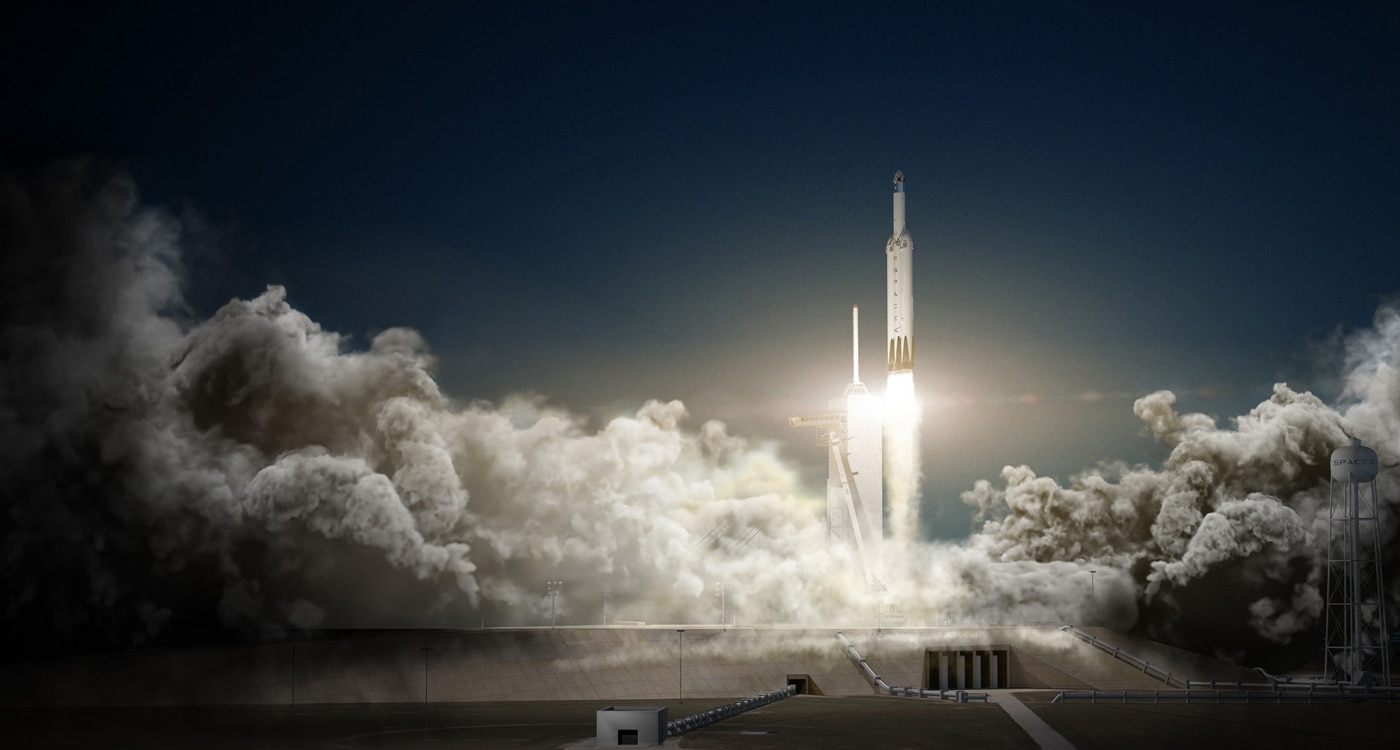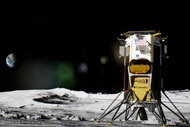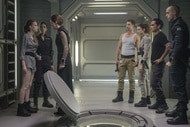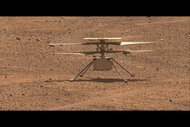Create a free profile to get unlimited access to exclusive videos, sweepstakes, and more!
Elon Musk: On the Roadster to Mars

Last Friday night (Dec. 1), SpaceX CEO Elon Musk, made a big announcement on Twitter.
First, he tweeted this:
This is a big deal. A very big deal: The Falcon Heavy rocket is the most powerful rocket since the Saturn V (excluding the Soviet N1, which, to put it delicately, never performed successfully, and the Energia, which was discontinued). The first launch of the Heavy has been delayed a number of times, though in recent months Musk has said it should launch early 2018. That appears now to be a realistic goal.
Essentially three Falcon 9 boosters strapped together, the Falcon Heavy will be able to throw a very large payload into Earth orbit, a smaller but still substantial one to the Moon… or a smaller one to Mars.
And that brings us to Musk’s second tweet:
I chuckled when I read that. I’ll admit I dithered over whether he was joking or not; he has a tendency to make very dry jokes about launches, but he also says things that seem like jokes when he’s actually serious.
I even replied*:
Bowie’s Space Oddity, for those not in the know, was covered by Canadian astronaut Chris Hadfield when he was on the International Space Station.
But as I thought about Musk’s tweets more, I began to wonder: Is he serious? My colleague Eric Berger at Ars Technica wrote an article saying yes, he was. Then an article came out on The Verge saying Musk told them he was joking. Which was it?
So I decided to contact Musk. He got back to me, and gave me the info†. There have been a lot of rumors and misinformation about what’s going on here, so let me lay this out for y’all:
1) Yes, he’s serious. He’s putting a Tesla Roadster in the top of the Falcon Heavy and launching it into space.
2) No, it’s not going to Mars. It’s going near Mars. He said it’ll be placed in “a precessing Earth-Mars elliptical orbit around the sun.” What he means by this is what’s sometimes called a Hohmann transfer orbit, an orbit around the Sun that takes it as close to the Sun as Earth and as far out as Mars. This is a low-energy orbit; that is, it takes the least amount of energy to put something in this orbit from Earth. That makes sense for a first flight.
By the way, this was one reason I thought Musk to be joking at first. Putting a payload into orbit around Mars is tricky, and it would mean putting the car inside some sort of rocket package in the payload to slow it down from interplanetary speeds to merely orbital speeds. That takes a lot of careful planning, design, and engineering, and didn’t seem like something that could be done off the cuff. However, just putting it on an elliptical heliocentric orbit is easy.
Well, as easy as launching a gigantic rocket like this can be.
3) Is this some sort of cross-promotional thing for SpaceX and Tesla? Musk says no, any more than launching a wheel of cheese on the first Dragon test flight was “promoting the dairy industry.” I was wondering about this as well, but this does strike me now as just one-upping the Cheese Gambit. A Red Roadster to the Red Planet… or near it, at least.
I was also concerned at first that putting a car into orbit around Mars seemed, well, profligate. Why not put up some sort of basic scientific package, or even better a CARE package for future astronauts loaded with water, food, and equipment?
However, since the payload will just be on an interplanetary orbit, there’s no real need for that. As a bonus, launching a car shows just how powerful the rocket is. As a PR stunt, it’s a clever one; it’s actually Musk’s own car.
He added that they may put other items in it as well. “We’re open to ideas from the public, he wrote me. “Just bear in mind that there is a good chance this monster rocket blows up, so I wouldn’t put anything of irreplaceable sentimental value on it.”
That’s probably good advice. I suggest sending a DVD of George Pal’s “War of the Worlds”. I’d also be happy to supply a copy of one of my books. Of course, a CARE package for future Martians is still a good idea, too.
[Correction: I originally wrote the boosters will not be landing back on Earth. I was going by some old notes I had, but that is incorrect: All three cores will be landing back on Earth after launch.]
SpaceX is also working on making other parts (like the payload fairings) reusable, bringing down costs further. This is a very exciting step, and I do very much wish SpaceX success.
The exact launch date is still TBD, and there will likely be more short delays around the appointed time as well. But hopefully it’ll be sooner rather than later.
One more thing. When talking about taking ideas from the public for items to launch, Musk added that, “In the end, love and sentiment are all that matter.”
Well, that, plus a lot of engineering and physics. This is, after all, rocket science.
* I realize now I should’ve included the version made by my friends Marian Call and Molly Lewis, because it’s amazing.
† By way of disclosure: I am an admitted fan of SpaceX, and have written quite a few posts supporting the company, the idea of reusability, and the Falcon Heavy as well. I’ll note too that I was considered (though not hired) for a writing job with SpaceX, and have contracted with Tesla (formerly SolarCity) to have my house outfitted with solar panels and a set of PowerWalls (I’m hoping to write more about this as it happens). I also support Blue Origin and other private companies in their endeavor to make space travel less expensive and more reliable as well.












